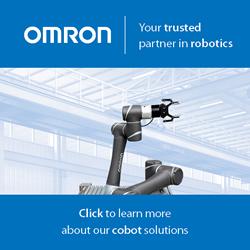Federal Aviation Administration Grants Special Airworthiness Certificate for Nighthawk IV Micro Unmanned Air System
Applied Research Associates, Inc. (ARA) has received a Federal Aviation Administration (FAA) Special Airworthiness Certificate for its Nighthawk IV micro Unmanned Air System (UAS) operating at its Randolph, Vt. location for the purposes of research & development, customer demonstrations and crew training.
Albuquerque, New Mexico October 16, 2013
Following a comprehensive review and demonstration in September of 2013, Applied Research Associates, Inc. (ARA) has received a Federal Aviation Administration (FAA) Special Airworthiness Certificate for its Nighthawk IV micro Unmanned Air System (UAS) operating at its Randolph, Vt. location for the purposes of research & development, customer demonstrations and crew training. This special airworthiness certificate is supported by extensive safety, manufacturing, inspection, maintenance and crew training procedures that were reviewed and accepted by the FAA as part of a recent visit to witness post certification maiden flights.
Law enforcement agencies, universities and public agencies such as the Forest Service, National Park Service and Customs and Border Protection can apply for Certificates of Authority (COA) from the FAA to fly in the national airspace. Customers who purchase Nighthawk IV micro-UAS aircraft will now have access to the full set of required documentation and procedures necessary for them to receive FAA approval to fly Nighthawk IV's in their designated airspace operating under a COA.
"The FAA approval of ARA's combat proven Nighthawk IV micro-UAS technology for use in the national airspace is an important milestone for ARA and its many non-military government customers," said Dr. Rob Sues, ARA's CEO. "This proven technology can improve results and decrease costs in traffic accident investigations, search and rescue, drug smuggling, agricultural assessments, flood damage, bridge inspections and many other civilian applications."
Nighthawk IV is the fourth generation micro-UAS produced by ARA since building its first micro-UAS for the US Air Force in 2003. Over 200 earlier versions of Nighthawk were combat proven in Iraq by US Army infantry forces who found the micro-UAV to be incredibly easy to carry by a single soldier and to operate and maintain in the field. ARA has upgraded the Nighthawk design, avionics and replaceable payloads to provide improved in-flight stability, greater range, duration and improved EO/IR payload options while maintaining a cost effective system for one or two person dismounted operations. The Nighthawk IV goes airborne by a slight flick of the wrist or it can be launched from a tube. The advanced autopilot flies the plane while the operator uses a simple touch screen to direct the aircraft where to fly, when to return and where to land. Multiple redundant safety features allow a single operator to safely fly this 2 pound micro-UAS after just 4 hours of training.
About ARA: Applied Research Associates, Inc. (ARA) was founded 1979 in Albuquerque to solve problems of national importance by providing science and engineering research, technical support services. The company's applied research delivers solutions for national defense, homeland security, aerospace, transportation and manufacturing.
Featured Product

Discover how human-robot collaboration can take flexibility to new heights!
Humans and robots can now share tasks - and this new partnership is on the verge of revolutionizing the production line. Today's drivers like data-driven services, decreasing product lifetimes and the need for product differentiation are putting flexibility paramount, and no technology is better suited to meet these needs than the Omron TM Series Collaborative Robot. With force feedback, collision detection technology and an intuitive, hand-guided teaching mechanism, the TM Series cobot is designed to work in immediate proximity to a human worker and is easier than ever to train on new tasks.
